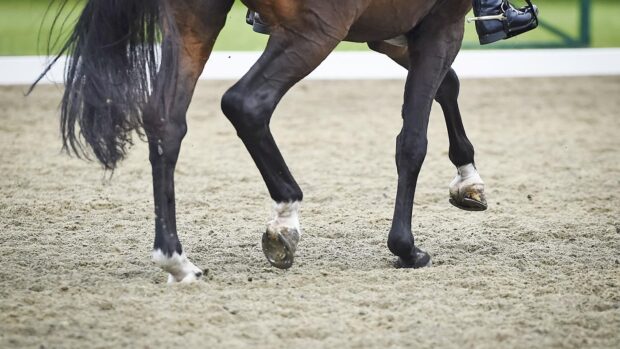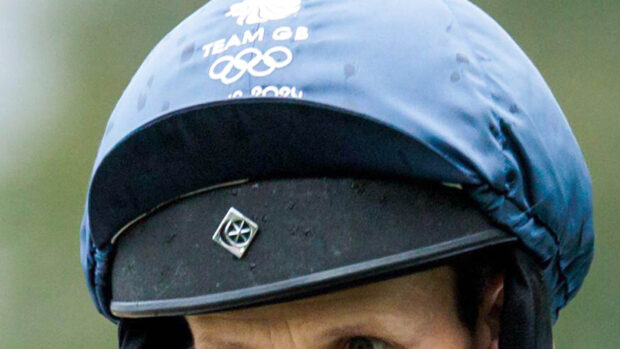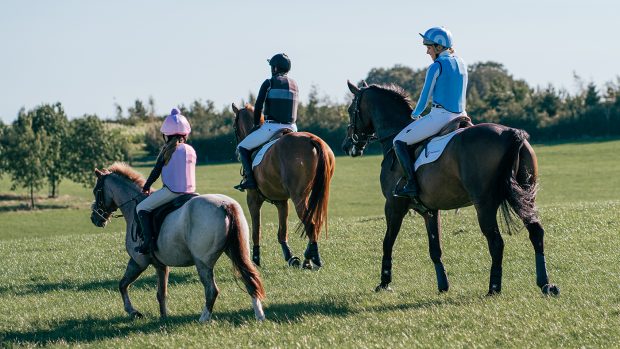Riders are calling for international standardisation of body protectors after the inquest into the death of Jordan McDonald at last year’s Nunney Horse Trials reported that the Canadian event rider was wearing a body protector that would not have met British Eventing’s (BE) safety standards.
Jordan (pictured, top), 30, was riding Only Me in a novice section on 14 June 2014. The pair had a rotational fall at fence 7a on the cross-country course and Jordan suffered “fatal chest injuries”, the inquest last week (12 May) found.
When returning a verdict of accidental death, Tim Hayden, assistant coroner for East Somerset, said: “There were multiple fractures on each side of the ribcage, four on one side and five on the other, and a laceration of the lung which made the process of resuscitation very difficult and subsequently impossible.”
Accident and emergency consultant Dr Michael Whitlock, who was on duty at the event, said: “The area where the lung was damaged probably had no protection. It is difficult to predict the severity of the injuries if a Class Three [BETA standard] body protector had been worn.”
Dr Whitlock confirmed to H&H that Jordan “was not wearing a body protector that conformed to any recognised international standard”.
He added: “He was wearing a high-standard Charles Owen hat that was markedly damaged but he had no brain injury so the helmet did its job.”
The coroner confirmed to H&H that Jordan had not been wearing an air jacket.
No global standard
While British Eventing (BE) has clear rules on the standard of body protector which must be worn — and has announced that it will review the current rules following this inquest — the FEI has no rules on the subject.
The 2015 FEI eventing rule book only states, in reference to cross-country: “Body protectors are compulsory for this test.”
Bruce Haskell, of the International Eventing Riders Association, said the group had “been pushing the FEI for a minimum standard of body protectors for some time”.
“We accept that eventing is a high-risk sport, but there are two areas — head protection and body protection — that can help reduce this risk, and tougher regulation should be put in place,” he told H&H.
“We are wholly behind BE’s efforts to improve safety standards and wish the FEI would follow suit.”
An FEI spokesman told H&H they couldn’t say more until they had seen the BE review.
“We would be very interested to study it, but won’t be able to comment on the findings before that,” she said, but added that body protectors are expected to be reviewed as part of the FEI risk-management programme.
Jordan’s sister, Shannon Maas, said safety is extremely important to the family and that her brother “was not wearing substandard body protection”.
“He was wearing a Tipperary vest, which is a well-known North American brand,” she said. “My feeling is that the United States Eventing Association and Equine Canada should follow what BE has done and make the highest standard of body protector a requirement in their rulebook. Then all organisations should develop a method to assure that the rider’s body protector meets this standard prior to competition.”
Shandiss McDonald, Jordan’s wife, said they had “no idea” that the protector wasn’t approved in the UK.
Equine Canada rules state, similar to the FEI: “A body protective vest must be worn,” but doesn’t specify a standard.
Better checks?
Daisy Berkeley, the athlete representative on the FEI eventing committee, called for more vigilant checks from organisers and governing bodies.
“In Britain we are required to ride in a certain standard of body protector,” she said.
“But our body protectors are not tagged and checked consistently in the way our helmets are. Although we need to be responsible for our own safety, riders are not always the best at keeping up to date on improvements in standards. Spot checks when you pick up your numbers at the beginning of the season, and at random events, could improve awareness.”
Dr Whitlock added: “Although it would not be so easy to tag body protectors it wouldn’t be impossible, but it is up to organisers and BE to see if that’s feasible.”
Ref: H&H 22 May, 2015




